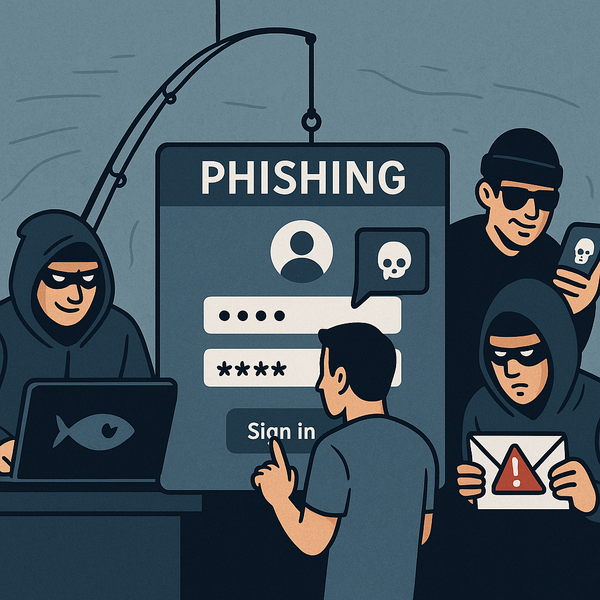Introduction to Offensive Security

When people hear “cybersecurity,” they often picture a figure in a black hoodie typing away in a dark basement. But that’s not quite how it works. In fact, some of the most important cybersecurity work isn’t about defending against hackers, it's about thinking like one. That’s where offensive security comes in.
What is Offensive Security?
Offensive Security is the proactive side of cybersecurity. Instead of waiting for attackers to strike, professionals in this field simulate real-world attacks to find and fix vulnerabilities, flaws, and holes before the bad guys do. The job is to think like an attacker but to act ethically. Imagine hiring someone to break into your house on purpose, not to rob you, but to show you your weakest areas and blind spots.
What does it involve?
There are many roles under the offensive security umbrella, but one of the common ones is penetration testing, often called “pen-testing” or “ethical hacking”. Penetration testing involves simulating cyberattacks on a company, trying to break into them ethically, and then helping fix the flaws that are found.
Depending on the scope, a penetration test might target:
- Web applications - Websites and applications are a prime target. A small vulnerability in a login form or file upload can give an attacker access to an entire customer database.
- Networks and infrastructure – From firewalls to routers, servers, work laptops, and printers. Mapping out how an attacker could move through a company’s internal systems. A single vulnerability could give someone control over the entire organisation’s network!
- Cloud Services – More and more businesses are using cloud platforms. Cloud services host infrastructure for you, rather than hosting machines on site. Major platforms like Amazon AWS, Microsoft Azure, and Google Cloud can be a goldmine for attackers if they are not set up securely.
- Social Engineering – This involves tricking or manipulating people rather than systems. Tricking someone into handing over a password or clicking dodgy links is often easier and more successful than many common attacks.
- Physical Intrusion – Simulating breaking into a physical environment. Think of dressing up like a staff member and casually walking into a company HQ. Yes, this is real! It’s one of the more fun jobs and proves that security isn’t just about digital vulnerabilities.
Why does it matter?
We live in a world that runs on technology – banking, healthcare, transport, communication, shopping – everything is online, even your smart fridge and dishwasher. And with every connection comes a potential way in.
Cyberattacks are no longer rare, and they are not always sophisticated. Sometimes, all it takes is a weak password or one wrong click on an email. The ultimate goal is to assess and protect confidentiality, integrity, and the availability – or in simple terms, to keep sensitive data private, to prevent data from being changed or damaged, and to make sure systems stay up and running.
Some Real-World examples
Understanding why offensive security is important becomes easier when you look at what can happen when it has gone wrong. Here are just a few real-world examples of major breaches that could have been prevented with proper testing and security controls in place:
- Ashley Madison
Ashley Madison is a dating website marketed to married people seeking affairs – back in 2015, they suffered a breach where attackers stole and leaked the personal data of 37 million users. The attackers exploited poor encryption and a lack of access controls. The consequence? Broken marriages, lawsuits, and huge reputational damage.
- Colonial Pipeline
In May 2021, Colonial Pipeline – one of the largest fuel pipelines in the US, supplying nearly half of the fuel to the US East Coast – was hit by a ransomware attack after hackers gained access through a compromised VPN account. The company had to shut down operations for several days, causing widespread fuel shortages and panic buying across several states. This attack showed how a relatively simple flaw caused national disruption.
- Experian & Court Ventures
Experian, one of the biggest credit reporting agencies in the world, unknowingly gave a cybercriminal access to a treasure trove of personal information. Back in 2013, a Vietnamese man posed as a private investigator from Singapore and convinced Court Ventures to give him access to a database with over 200 million personal records. By the time he was caught and arrested, he’d made over 2 million dollars from the stolen data; this shows how social engineering can be just as dangerous as hacking.
Beyond Penetration Testing
While penetration testing is a big part of offensive security, it’s not the only role. Some professionals simulate real-world attackers over longer periods, known as red teaming. Others take part in bug bounty programs, hunting for flaws and disclosing them ethically in exchange for recognition or payment. Some focus on studying and replicating known attacker behaviours to train teams and strengthen defences.



